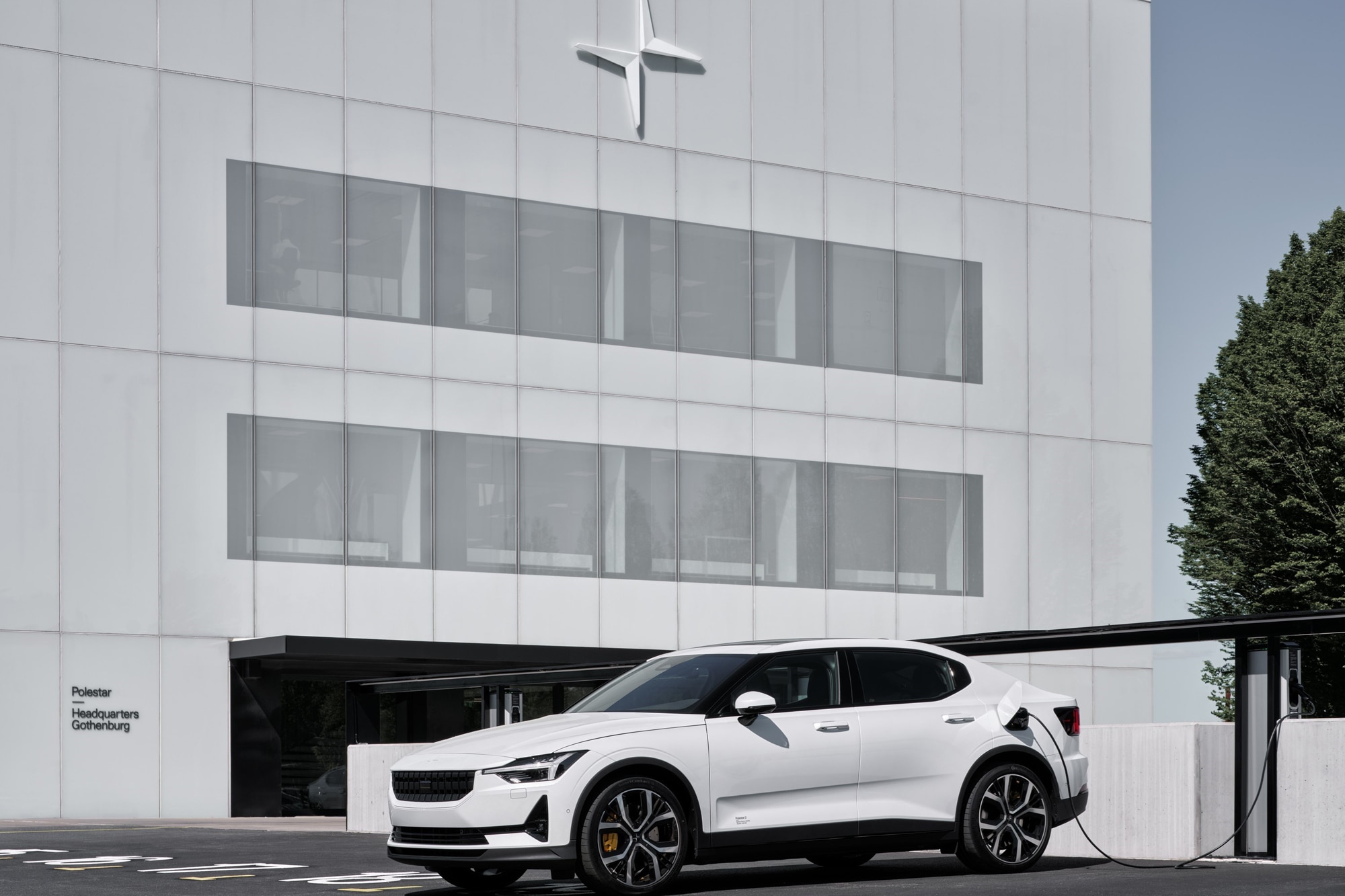Where Can I Charge My Electric Car?
Figuring out where to charge an EV can seem daunting. The good news is that several apps can help you find the best places to plug in.
 Polestar
Polestar
Whether you’re on the cusp of purchasing an electric vehicle (EV) or still in the research phase, figuring out where to charge an electric car is key to understanding how an EV will fit into your life. Fortunately, the best solution also requires the least amount of thought: Charge at home.
Charging an Electric Car at Home
A garage or driveway can be the ideal location to charge an electric car at all times, even if you only have a standard 120V household outlet available (considered “Level 1” charging). The average U.S. driver typically travels only about 30 miles a day—a fraction of the total range of the latest EVs—so as long as you’re not fully depleting the battery every day, an overnight top-up should be able to keep it charged enough for errands and commuting.
Stepping up to a 240V (“Level 2”) outlet like the one used for a laundry dryer can dramatically reduce charging times. Another option to expedite charging times is to invest in a dedicated Level 2 charging station from companies like
Where to Charge an Electric Car Away from Home
Charging at work is another option for some. But if that’s not possible, and you must charge while on the go, things are a little more complex than simply running to the local gas station. As of Spring 2022, there were roughly 47,000 public charging stations across the United States—as compared to more than 145,000 gas stations nationwide. Fortunately, there are apps available for both iOS and Android that connect to major charging networks like Electrify America, ChargePoint, and
As for rates, like gas stations, these vary based on the vary based on the local price of electricity. The national average during the day fluctuates between $0.30 and $0.40 per kilowatt-hour (kWh), but not every state allows companies to charge that way—some still require companies to charge per minute, which typically runs between $0.03 and $0.30 a minute, depending on the network, location and speed of the charger. Meanwhile, membership plans available on some networks offer reduced rates.
How to Find Public EV Charging Stations
Many automakers have enhanced their in-car infotainment systems with apps that help locate and navigate to charging stations, but they may not point you to the fastest, cheapest or most reliable options. Apps like
Google Maps and Apple Maps can also show you where to charge an electric car. The feature sets of these apps are enhanced in some vehicles. For example, in the Polestar 2, Google Maps is deeply integrated into the infotainment system and can suggest charging stations along chosen routes. On the iPhone front, the Ford Mach-E infotainment system integrates with Apple Maps to offer route-based charging locations. Apple says it’s working with other automakers to make the feature more widely available.
For Tesla owners, things are a bit simpler, thanks to the automaker’s proprietary charging network. The latest, “V3” Superchargers can recharge up to 75 miles in just 5 minutes. What’s more, the Tesla infotainment system is so well-integrated with the network that it will not only find Superchargers nearby, but also propose charging station stops along a specified route to optimize battery usage. As of Spring 2022, there were more than 16,000 Tesla Superchargers at more than 1,300 locations across the United States.
Planning Your Charging Stops on a Long-Distance Trip
If you don’t want to rely on your EV’s nav system, there is another solution for route-based charging suggestions.
Written by humans.
Edited by humans.
 Roberto Baldwin
Roberto BaldwinRoberto Baldwin is an automotive and technology reporter based in Northern California. In addition to traditional car coverage, he has focused on the emergence of electric vehicles and driver assistance features in vehicles and the eventual launch of autonomous vehicles. Over the past seven years he’s sat in more autonomous test vehicles than he can remember but still reminds the average driver to keep their eyes on the road. He currently owns a Subaru BRZ, Hyundai Kona Electric, and a Vespa GTS 250.
Related articles
View more related articles